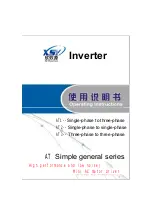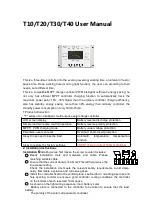Summary of Contents for DAC5.1 Signature
Page 19: ...7 3 4 Connecting the Black wires Figure 5 Black Wires to PCB Followed by the Black wires 15 ...
Page 31: ...Figure 16 Completed Filament Board 27 ...
Page 34: ...Figure 19 Power Supply PCB Schematic 30 ...
Page 46: ...42 ...
Page 47: ...43 ...
Page 49: ...45 ...
Page 50: ...46 ...
Page 51: ...47 ...
Page 62: ...58 ...
Page 72: ...Figure 49 Super Regulator Board to DAC Board 68 ...
Page 80: ...Figure 56 Completed Line Stage Installed 76 ...
Page 97: ...Figure 73 Installed Rotary Switch Outside Figure 74 Installed Rotary Switch Inside 93 ...
Page 101: ...21 DAC5 1 Appendix 97 ...
Page 102: ...98 ...
Page 103: ...99 ...
Page 104: ...100 ...



































